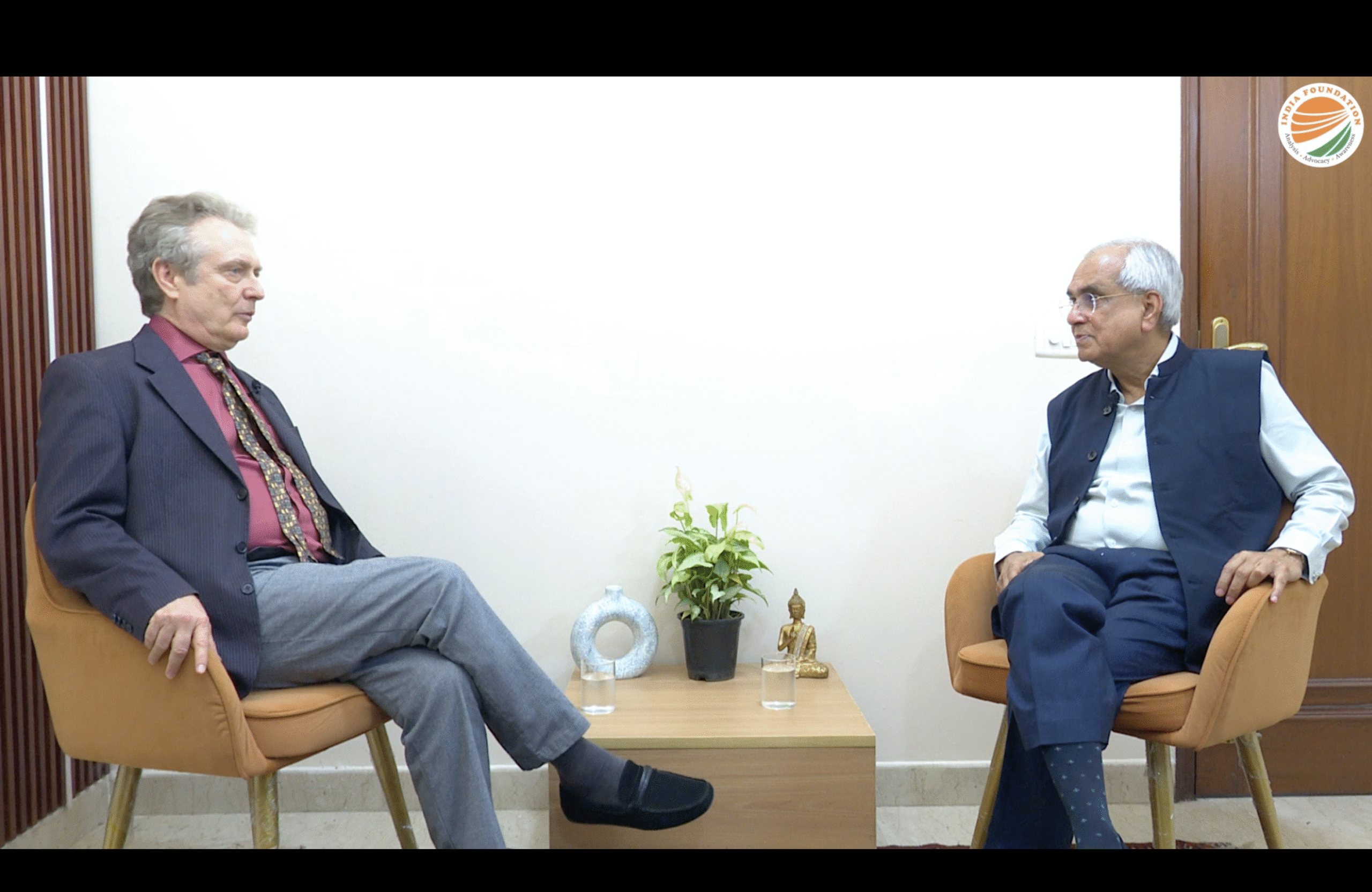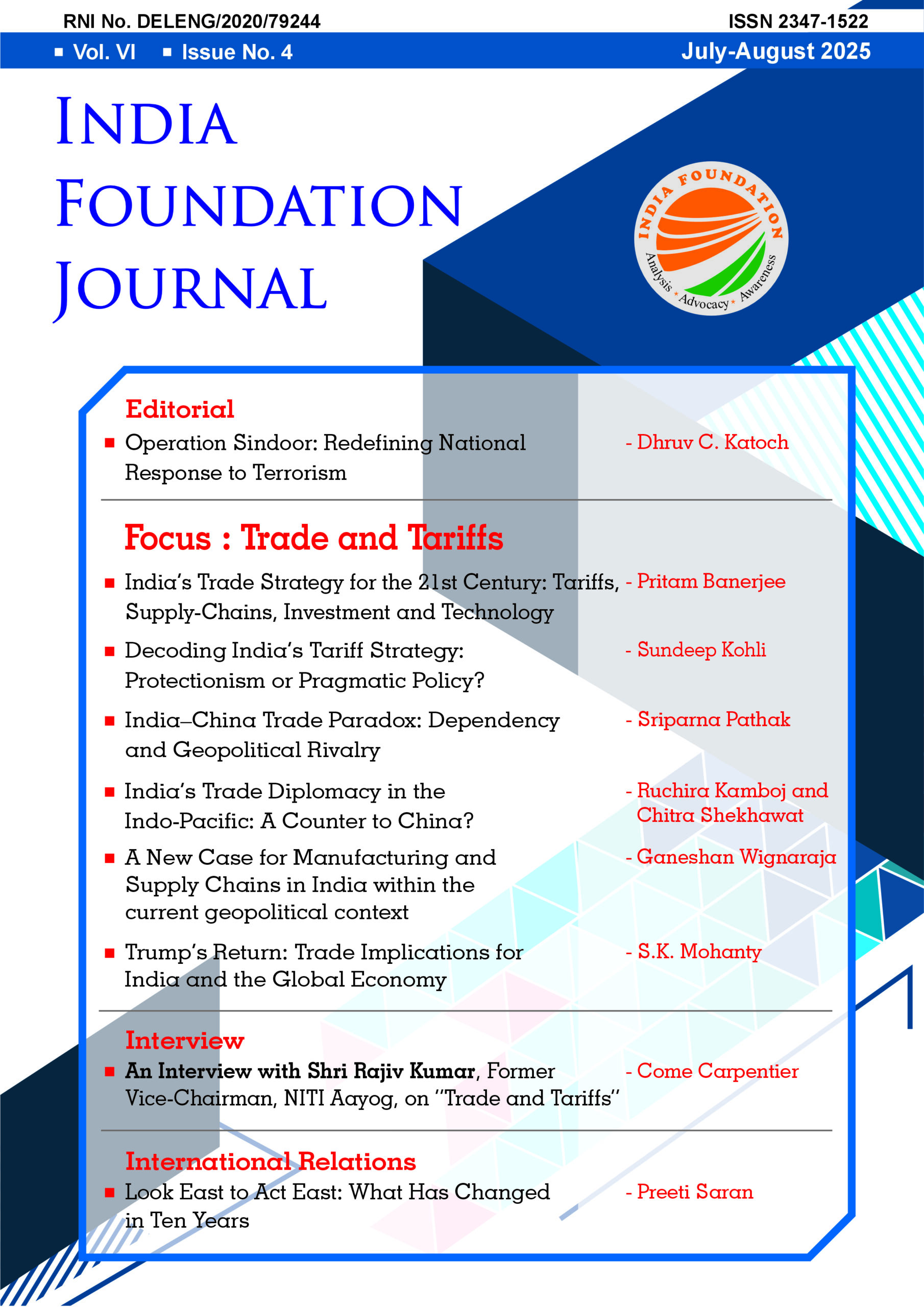Mahatma Gandhi suggests in ‘Nai Talim’ that knowledge and work happen simultaneously. He was of the view that the then existing education system was like a factory churning out clerks for government1. The purpose of the education system however, should be to create thoughtful citizens capable of positively serving the interests of the nation and its people. Gandhi ji had once remarked, “The real difficulty is that people have no idea of what education truly is. We assess the value of education in the same manner as we assess the value of land or of shares in the stock-exchange market. We want to provide only such education as would enable the student to earn more. We hardly give any thought to the improvement of the character of the educated. The girls, we say, do not have to earn; so why should they be educated? As long as such ideas persist there is no hope of our ever knowing the true value of education2.”
Even with this awareness amongst our nation builders, the Indian government, post independence, continued the colonial model of imparting education. The literacy rate of India was around 12 per cent and school going children around 18 per cent at the time of India’s independence3. It can be posited that the reality of the time dictated different priorities; hence, the government focused on higher education including the Indian Institutes of Technology, catering to the needs of building mega industries, and improving infrastructure and institutions of the country 4. This approach perhaps was suitable for those times and was in accordance to the required workforce. There is a sea of change in India today, both in terms of demography and aspirations.
Traditional employment avenues are exhausting, there are only limited government jobs to offer and these cannot be expanded beyond a point. Nature of work and jobs is fast changing and is heavily driven by technology and innovation. ‘World Development Report 2019: The Changing Nature of Work’ reported that many children currently in primary schools will work in jobs as adults that do not even exist today. Rise in unconventional industries, freelancing, massive open online courses etc. will lead to non-linear opportunities and they will require quality education along with non-traditional skills to be given to our children.
It isn’t that India has overcome the traditional challenges of our education system. Even now, more than fifty percent of students in grade five cannot read a grade two text or solve a simple subtraction problem5. Year on year we are witnessing reports showcasing poor performance in foundational literacy and numeracy. Gross Enrolment Ratio (GER) in higher education is only 24.56 and the employability post-graduation is even worse. According to the ‘India Skills Report 2019’ only 47 per cent graduates are employable in India7. Some assessments say we will lose around ten crore or more of our students to illiteracy if this continues8. The demographic dividend which we in India are so proud of will last only over two decades9. If we fail this generation, we will be failing as a nation.
The grave challenge facing our policymakers today is to find the right link between current education and future jobs. The education imparted to the kids today should prepare them well for the unchartered territories of future workforce. Education in the twenty-first century cannot restrict a child’s horizon to their books or classrooms. Draft New Education Policy 2019 mentions, ‘Globalisation and the demands of a knowledge economy and a knowledge society call for emphasis on the need for acquisition of new skills by learners on a regular basis, for them to ‘learn how to learn’ and become lifelong learners.’ The key skill therefore would be the child’s ability of learning how to learn.
The Philosophy behind Learning how to Learn
When we plant a seed in the ground, we provide for water and manure and create a nurturing space. The seed has in it to grow as per its nature. We don’t ‘support’ the seed to turn itself into a mango tree or a tomato plant but rather watch it grow in wonder. Our children are the seeds that will bloom into diverse sets of individuals if we are willing to give the control of learning back to them.
While there are multiple issues in the current education system, the one authors of this article most resonate with is how we treat our students. Are they vulnerable consumers of the education system or are they empowered beings capable of generating their own learning? All stakeholders—be it the school, parents, community, government or non-governmental organisations etc. currently treatchildren as individuals who needs to be ‘taught’; that they can’t decide what’s right for them and can’t take their own decisions. What if we start treating our children a little differently, as individuals who don’t need spoon-feeding; individuals who can make choices and create their own strong learning experiences based on their own interests and aspirations. As a philosophy, we believe that this is a possible key to solving India’s issues around education.
What is Learning how to Learn?
In this VUCA (Volatile, Uncertain, Complex and Ambiguous)10 world, the skills required in the professional world are fast changing. Something that we learn today might lose its relevance tomorrow. It’s imperative that our students are able to up-skill themselves independently without taking a break and spending resources every time a disruption happens in their life. Skill of learning is the manure that can enable all children to continue learning well and be relevant to the needs of this world throughout. Learning to Learn then becomes the ability to lead one’s own life in the direction of choice, aligning self with the changes in the external world.
The Process of Learning
Various people have written about the process of learning. A notable framework is Kolb’s Experiential Learning cycle11. It talks about the cycle of taking up a concrete experience, reflecting on the experience, synthesis of the experience and then implementing the new learning in other aspects of life. While there are critiques of this process, at the heart, learning to learn is imbibing the circular/iterative process of action and reflection. For the students, we need to structure the process and give them ample opportunities to learn and imbibe the steps. A few tools which can be extremely helpful are:
Mind Map12 – As a tool, mind mapping allows structuring of various ideas in a visual format. It is basically exploring a central idea or a question which can then branch off into more sub-ideas and thoughts. Students use the mind mapping technique to lay out the expanse of their topic of study and connect it to things they already know and things they would like to know.
SMART Goal setting – Much has been written on how SMART (Specific, Measurable, Achievable, Relevant and Time bound) goals are set and the benefits of such a goal setting exercise13. A SMART goal is imperative for an independent learner to start taking small steps on the journey of learning.
Backward planning14 – Once you have a SMART goal, then it is critical to convert it into a plan of action. A backward plan allows a learner to plan backwards from their goals. Backward planning also enables the learner to judge if the SMART goal is indeed realistic.
Review and reflection – The ability to step back and reflect is extremely important for any learning to happen. This fundamental habit must be inculcated in our children early on in life.
A child is naturally curious and learns at a fast pace during early childhood15. Each element of their surrounding is a learning experience for the child. However, even from these seemingly unlimited set of resources, there are certain things that catch a child’s fancy over others. A child who is left free to explore, thrives. To enable high quality independent learning, the learner needs to experience an environment which lets them be child-like. Another important aspect of enabling such learning is to create an environment free of consequences – where the child’s natural curiosity takes over. It’s important that the child doesn’t just learn to access a reward or to avoid a consequence.
A critical element to get students to start on the journey of being an independent learner is to treat them with respect and allow them to be creators of their own learning. As an educator or a parent, other important elements are to understand the child’s interest and aptitude and make learning resources available to the child. Encourage the child to actively experiment, make their own mistakes and learn from them. Provide them access to quality feedback from teachers and experts and then just watch from the sidelines as they take charge and grow.
‘Learning to learn’ as a skill requires open minds and fundamental change in structure of schools. The structural change suggested in the draft new education policy 2019 from the rigid ’10+2′ to the new ‘5+3+3+4’ is more suited to impart such skills16 . The current system promotes rote learning and is ill-equipped to prepare a child for future challenges and opportunities. The current school infrastructure too is not only outdated but insufficient to cater to the needs of our children. Of all the school education institutions in India (including senior secondary, secondary, upper primary and primary schools17) only 7 per cent are intermediate or senior secondary schools (1,12,637 out of total 15,22,346 schools). If we don’t have enough schools to send our kids to college, then how are we preparing tomorrow’s workforce?
Students today will be the building blocks of tomorrow’s workforce. With rapidly reducing size of memory chips18 and equally expanding distance among human relationships, tomorrow’s workforce will be at a greater risk of facing issues of mental health19. To state some glaring facts, according to a World Health Organisation report released in 2018, one in six people aged ten to nineteen years suffer from depression. Half of all mental health issues start by the age of fourteen and globally, depression is one the leading cause of illness and disability among adolescents. Suicide is the third leading cause of death among fifteen to nineteen year olds20. With such bleak statistics, the importance of ‘trust’ in a child cannot be emphasised enough, which involves trusting a child to make their own choices and trusting them to make their own mistakes. Education at the end of the day should be a means to self-discovery and evolution as human beings. Swami Vivekananda had said on education that ‘it is the manifestation of the perfection already present in man’. Let the perfections in the child manifest.
(Aaditya Tiwari is Officer on Special Duty to the Chief Minister of Arunachal Pradesh and Divakar Sankhla is the Co-founder of an NGO, Alohomora working with young adults. They both were part of the finalist team at Youth Summit 2016 Competition organised by World Bank Group. The theme of the summit was ‘Rethinking Education: Innovative Ideas to Transform Education’)
References:
1Mahatma Gandhi : Education, www.mkgandhi.org/edugandhi/gviews.htm.
2Mahatma Gandhi’s Thoughts Are of Eternal Value: Vice President, pib.gov.in/newsite/PrintRelease.aspx?relid=184105.
3“10 Facts on Illiteracy in India That You Must Know.” Oxfamindia.org, www.oxfamindia.org/featuredstories/10-facts-illiteracy-india-you-must-know.
4First Five Year Plan (1951-1956)
5“Join the Movement.” Teach For India, www.teachforindia.org/education-crisis/.
6https://mhrd.gov.in/sites/upload_files/mhrd/files/statistics-new/AISHE2015-16.pdf
7“Only 47.38% Indian Graduates Employable; Engineers Tops the List.” The Indian Express, 22 Nov. 2018, indianexpress.com/article/education/only-47-38-indian-graduates-employable-engineering-tops-the-list-5459556/.
8 https://mhrd.gov.in/sites/upload_files/mhrd/files/Draft_NEP_2019_EN_Revised.pdf
9Tandon, Suneera. “Eco Survey Warns of India’s Ageing Population, Says Retirement Age Should Rise.” Https://Www.livemint.com, 4 July 2019, www.livemint.com/budget/economic-survey/eco-survey-warns-of-india-s-ageing-population-says-retirement-age-should-rise-1562248716749.html.
10 http://usawc.libanswers.com/faq/84869
11 http://cei.ust.hk/files/public/simplypsychology_kolb_learning_styles.pdf
12https://dictionary.cambridge.org/dictionary/english/mind-map?q=mind+map
13https://www.techrepublic.com/article/use-smart-goals-to-launch-management-by-objectives-plan/
14 https://www.edglossary.org/backward-design/
15 https://www.nap.edu/resource/19401/ProfKnowCompFINAL.pdf
16 https://www.organiser.org/Encyc/2019/6/12/DEP-vision-for-the-future-of-education-in-India.html
17 “EDUCATION – Statistical Year Book India 2017: Ministry of Statistics and Program Implementation: Government Of India.” EDUCATION – Statistical Year Book India 2017 | Ministry of Statistics and Program Implementation | Government Of India, mospi.nic.in/statistical-year-book-india/2017/198.
18Moore’s Law, Gordon E. Moore https://ieeexplore.ieee.org/abstract/document/4785860
19 Winston, Robert, and Rebecca Chicot. “The Importance of Early Bonding on the Long-Term Mental Health and Resilience of Children.” London Journal of Primary Care, Taylor & Francis, 24 Feb. 2016, www.ncbi.nlm.nih.gov/pmc/articles/PMC5330336/.
20Desk, India Today Web. “India Is the Most Depressed Country in the World.” India Today, 17 June 2019, www.indiatoday.in/education-today/gk-current-affairs/story/india-is-the-most-depressed-country-in-the-world-mental-health-day-2018-1360096-2018-10-10.



